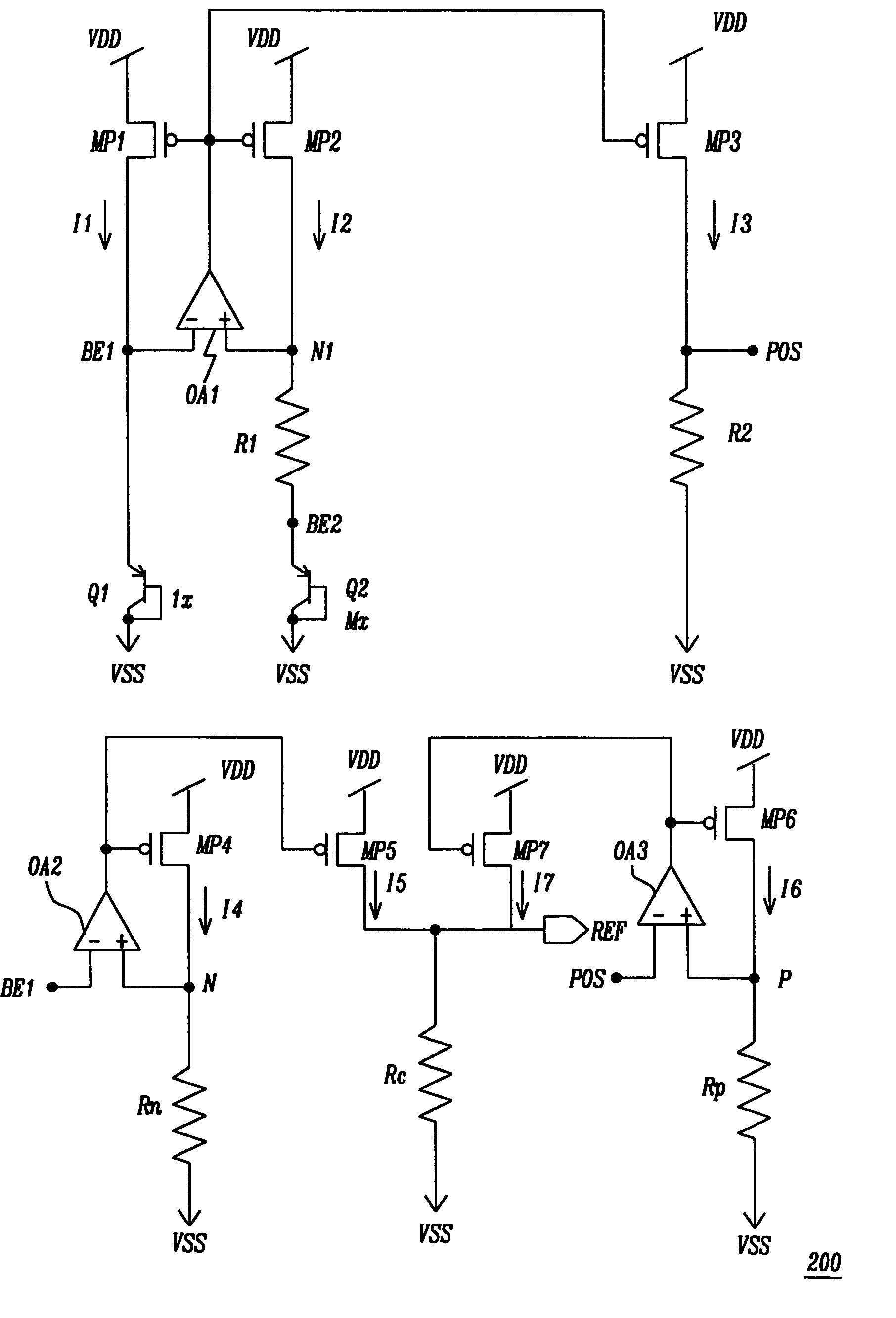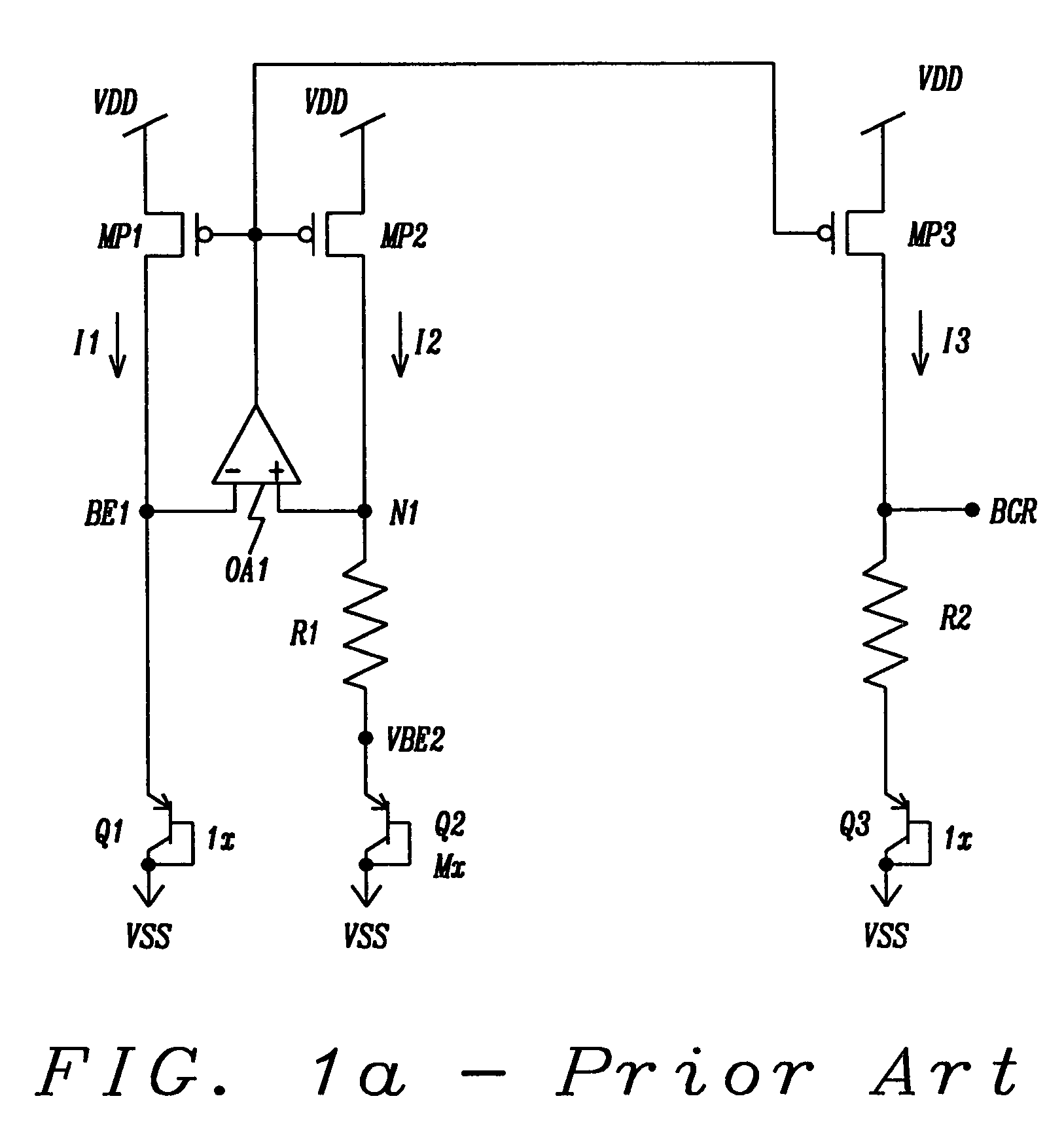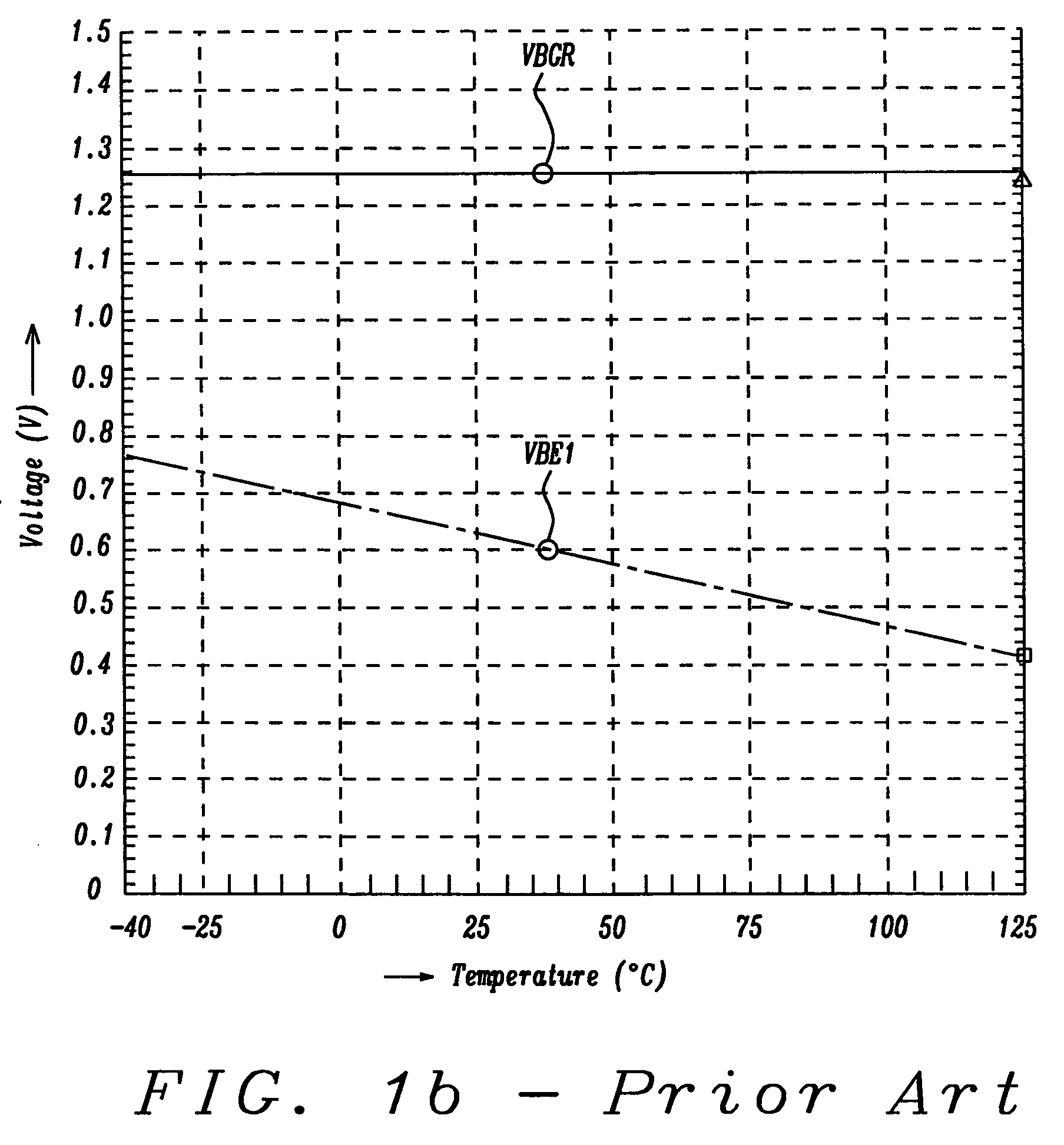Low voltage bandgap reference (BGR) circuit
a low-voltage bandgap reference circuit and reference circuit technology, applied in the direction of electric variable regulation, process and machine control, instruments, etc., can solve the problems of inability to approach a stable operation, inability to use a new bandgap reference circuit technique, and inability to stabilize the operation
- Summary
- Abstract
- Description
- Claims
- Application Information
AI Technical Summary
Benefits of technology
Problems solved by technology
Method used
Image
Examples
Embodiment Construction
[0052]A new low voltage bandgap reference circuit (BGR) is proposed which will be described in detail below. The circuit uses current summation techniques to implement the temperature compensation and is capable of working down to sub-1-V using standard CMOS processes.
BGR Circuit 1
[0053]Circuit 200 of FIG. 2a illustrates a first preferred embodiment of the present invention. FIG. 2a comprises a CMOS op-amp OA1, a current mirror with PMOS transistors MP1, MP2, MP3, diode-wired transistors Q1, Q2, and resistors R1, R2, all implemented in the standard CMOS process. VDD and VSS are the positive and negative power supply rails, respectively. Nodes BE1 and N1 are coupled to the minus and plus inputs of OA1, respectively. Nodes BE1 (alternatively node BE2) and POS are outputs which connect to inputs of op-amps OA2, OA3, respectively, described next. Resistor R1 is coupled between node N1 and Q2, resistor R2 is coupled between node POS and VSS. The area ratio of Q1 and Q2 is Q1:Q2=1:M. Curr...
PUM
 Login to View More
Login to View More Abstract
Description
Claims
Application Information
 Login to View More
Login to View More - R&D
- Intellectual Property
- Life Sciences
- Materials
- Tech Scout
- Unparalleled Data Quality
- Higher Quality Content
- 60% Fewer Hallucinations
Browse by: Latest US Patents, China's latest patents, Technical Efficacy Thesaurus, Application Domain, Technology Topic, Popular Technical Reports.
© 2025 PatSnap. All rights reserved.Legal|Privacy policy|Modern Slavery Act Transparency Statement|Sitemap|About US| Contact US: help@patsnap.com



